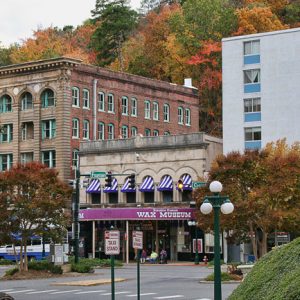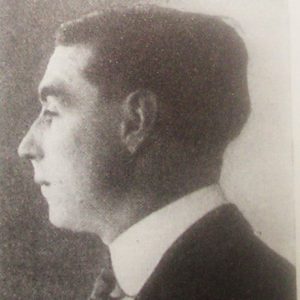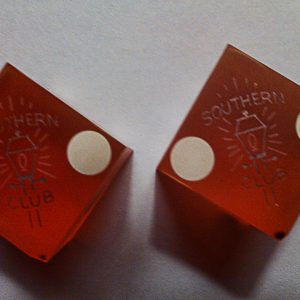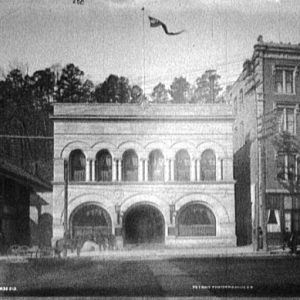calsfoundation@cals.org
Southern Club
The Southern Club was a gambling and entertainment facility established in 1893 in Hot Springs (Garland County) that gained notoriety during the 1930s as a hangout for visiting gangsters. Among the oldest structures in Hot Springs, the club is located at 250 Central Avenue near the center of the downtown business district. The building was added to the National Register of Historic places on June 25, 1985, as part of the Hot Springs Central Avenue Historic District.
At the end of the nineteenth century, Hot Springs experienced tremendous growth as a health resort and spa. One of the buildings constructed during this period was the private club of Charles Dugan and Dan Stuart, the Southern Club, which was built and opened in 1893. As early as 1910, the Southern Club ranked among the spa city’s most popular gambling houses, along with the Indiana and the Arkansas clubs. The Southern Club catered to a diverse clientele of locals and tourists during Hot Springs’s heyday as a health resort and gambling center. Among other notable customers, gangster boss Alphonse “Big Al” Capone frequented the Southern Club during the 1920s and 1930s. He became a frequent poker player at the club and always sat at an elevated table, where he commanded a clear view of the entire room. Even his preferred suite at the Arlington Hotel, number 442, overlooked the club.
The building’s ownership changed many times. A new owner usually meant changes for the Southern Club’s appearance. In 1927, William Stokley Jacobs purchased the building from the widow of the original owner. He expanded it and encased the front of the building in dark Pittsburgh glass that remains visible. Apart from being decorative, this glass served to help Jacobs conceal the gambling that went on within the club. Jacobs was known as the “czar” of Hot Springs gambling for many years due to his interest in six clubs in Hot Springs, including the Kentucky, Ohio, Ozark, White Front, Southern and Belvedere clubs. In the 1940s, the first floor was extensively renovated as Jacobs added a ten-and-a-half foot wide marble staircase. In the 1950s, the city’s first escalator was installed, which has been in continuous operation since that time.
The reign of illegal gambling came to an end in the 1960s under a severe state government crackdown on the city. Gambling devices were destroyed in large numbers, breaking the back of the closet industry. The Southern Club tried to survive by becoming a supper club, but did not succeed. In 1971, the building changed hands a third time as E. L. Lane bought the club from Jacobs. Lane changed the club into its present-day manifestation, Josephine Tussaud’s Wax Museum. Subsequently purchased by the Roberts family, it remains in their ownership today.
Visitors to the Madame Tussaud Wax Museum today can still spot original fixtures, furniture, wallpaper, paraphernalia, and architecture within the building and its exhibits, such as the marble staircase and the escalator. Most of the lighting fixtures in the building are original as well. The building stands as a lasting monument to Hot Springs’s history as a center for gambling and entertainment.
For additional information:
Allbritton, Orval. Leo and Verne: The Spa’s Heyday. Hot Springs, AR: Garland County Historical Society, 2003.
Arkansas Historic Preservation Program. “Central Avenue Historic District.” The Record 27 (1986): 1–68.
Eric Segovis
Ouachita Baptist University


 Josephine Tussaud Wax Museum
Josephine Tussaud Wax Museum  Owen Madden
Owen Madden  Southern Club Dice
Southern Club Dice  Southern Club
Southern Club  Southern Club Ad
Southern Club Ad  Southern Club Poker Table
Southern Club Poker Table 



Comments
No comments on this entry yet.